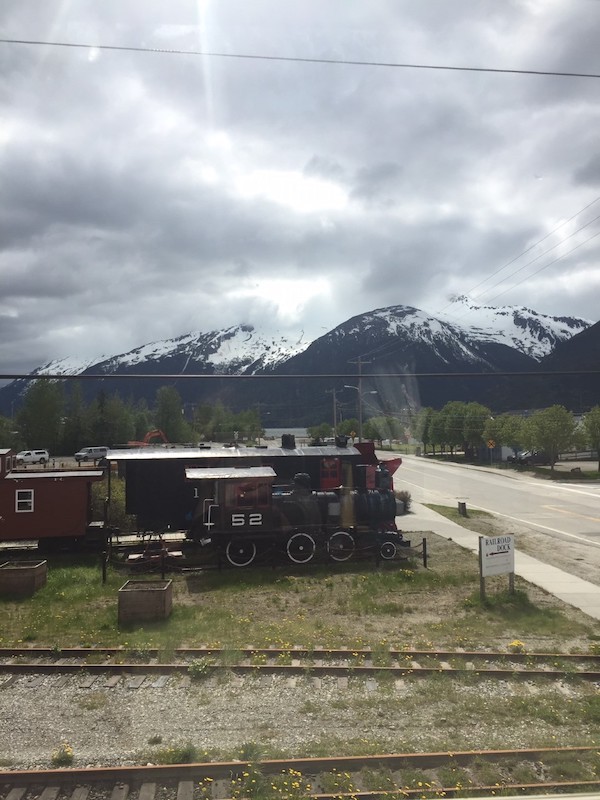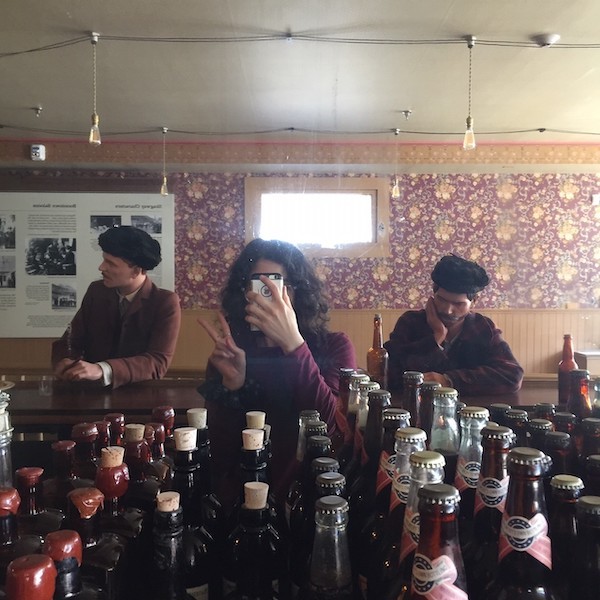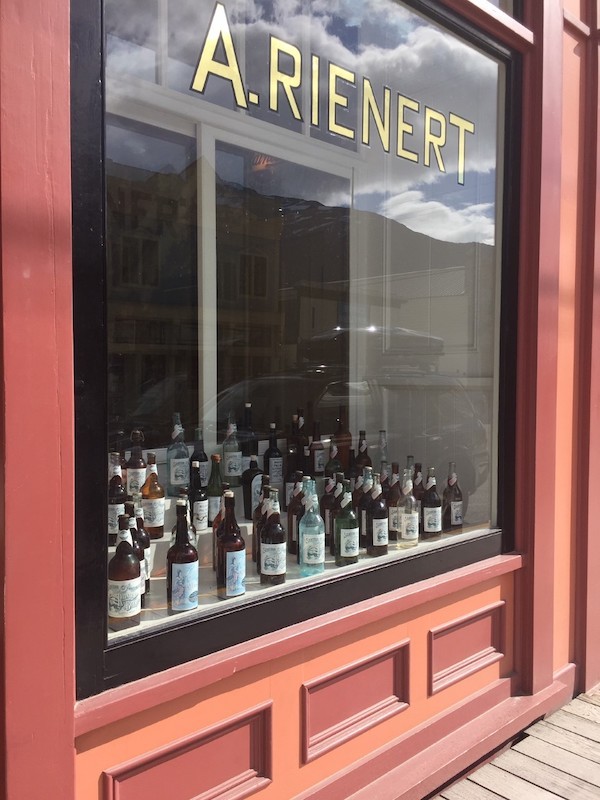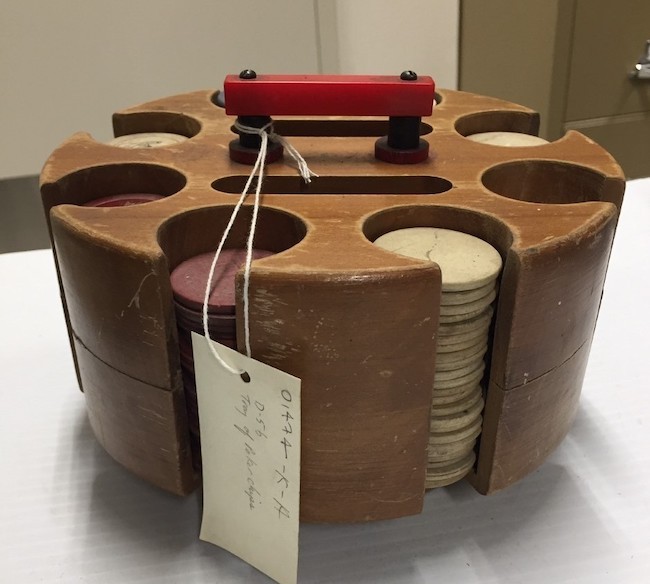Museum Work: Presenting the Past, Planning for the Future
Written by: Morgan W. Valenzuela
April 26-May 26, 2021
As if following the migratory birds, new folks have started to arrive in Skagway. A small handful are the independent travelers the town has hoped for, but more are new employees at Klondike Gold Rush National Historical Park. Not all of my new coworkers are newcomers to Skagway, many, especially those in Interpretation, are local hires. Familiar faces, neighbors, and friends will be clad in green and grey and there’s a new energy all over the park, humming in time with the sounds of spring.

The Resource Division Meetings, which I attend, are full of new voices and details about new projects, some of which I’m involved in. In preparation for the summer season, KLGO’s Museum Technician and I cleaned and opened two museums. The Captain William Moore Homestead – or The Moore House, for short – was one of these museums. The site is home to Skagway’s oldest structure, the Moore Cabin and dates from 1887. The cabin, well-cared for by the preservation team, is not open to visitors, but the Moore House next door is.
Both structures and the exhibits inside the Moore House shelter the stories surrounding Captain William Moore, his son Ben Moore, and Ben’s wife Klinget-sai-yet Shotridge. Klinget-sai-yet’s story is one of the most powerful in Skagway and one of the most tragic. If you, dear reader, ever get the chance to visit Skagway, I urge you to visit the Moore House and inquire further with the Interpretation Ranger. Of course, Skagway is a remote location and difficult to access in a normal year, let alone in a year during a pandemic, during which many folks have lost wages or work entirely. KLGO’s website is open year-round and is just a click away – here’s their webpage on The Moore Homestead.
The exhibits inside the Moore House are some of my favorites; it was an honor to help clean and open this site. The work was by no means difficult, but definitely not glamorous either. Like a fair amount of museum work, I ended the day slightly disheveled, covered in dust, and full of a desperate hope that I’d never see another spider again in my life (dead or alive).

KLGO’s Museum Technician and I also opened the Mascot Saloon. This space was just as dusty as the Moore House but, thankfully, didn’t involve as many spiders. The work was otherwise comparable, except for the vacuuming. The current Mascot Saloon exhibit includes three mannequins dressed in period garb and before doors opened to visitors, the clothing pieces needed to be cleaned. Cleaning clothing worn by a mannequin is simpler than you might think – you just need a particular vacuum, a gentle hand, and some patience. When done properly, this process removes the dust, but does not damage the clothing. It has been some years since I’ve done this task, but, with some pointers from the Museum Technician, I jumped back in with ease.
By the end of the week, both museums had their artifacts back on display, their spaces clean, and their supply cabinets well-stocked with microfiber cloths and nitrile gloves. It was a week full of conversation, as well, and I have been reminded of another reason I enjoy this type of work – it includes a mix of solo and group projects.

As with any museum, the museums at KLGO are being prepared not just for this season, but for the seasons ahead. At the core of museum work is navigating the careful balance between making history accessible to visitors and preserving the artifacts that help us understand, interpret, and represent that history. This ever-present balancing act comes to the forefront whenever an exhibit is being redesigned, as is the case with KLGO’s Mascot Saloon.
An old place interpreted by new signage and filled with artifacts that had not previously been on display is an excellent opportunity to improve the way the history of that place is passed on to visitors. An exhibit redesign benefits the artifacts themselves, too. The exhibit team must consider which artifacts need to be rotated out, which artifacts can be put on display, and how long those newly selected artifacts can safely be displayed. I was very pleased to help compile a list of artifacts from KLGO’s collections to be considered for display in the upcoming exhibit.
The redesign was at an advanced stage when I was asked to lend a hand. The team had compiled a list of requested items – these items were artifacts, facsimiles, and props. As I have navigated collections software, designed an exhibit, and selected artifacts using that software at a small museum earlier in my career, I was familiar with this work and concentrated on the artifacts the team requested first, then moved on to find examples a facsimile might be based on.
Using ICMS Re:Discovery to search KLGO’s collections, I selected as many options as possible for the team’s consideration. Of course, I did some selection for them. The exhibit plan, which I referenced often, was immensely helpful in determining which years the exhibit focused on, what size of display case specific artifacts needed to fit in, and whether or not items would be in hand’s reach of patrons. All of these factors were considered as I compiled a list of items and made notes. Many of the notes I included were taken directly from ICMS Re:Discovery. When artifacts are cataloged in the collection, used in an exhibit, rehoused, or treated, a condition report is required. These notes on condition will be useful for the exhibit team when they decide whether or not an artifact is stable enough for display. There were a few artifacts whose descriptions in ICMS Re:Discovery were not detailed enough, so I went into the collection storage space to view them in person and take photos for the exhibit team.

This project was not originally a part of my internship duties, but I am absolutely delighted that it became one. I had developed the skills needed for this work before coming to KLGO, but to exercise them in a new collection with unfamiliar collections software was rewarding. I am excited to bring these skills, now developed further, to my next position. When this blog is published, I will be more than halfway done with my Historian and Librarian Internship at Klondike Gold Rush National Historical Park. While I will be leaving Skagway soon, I’m excited to return – and to visit the finished exhibit when I do.
